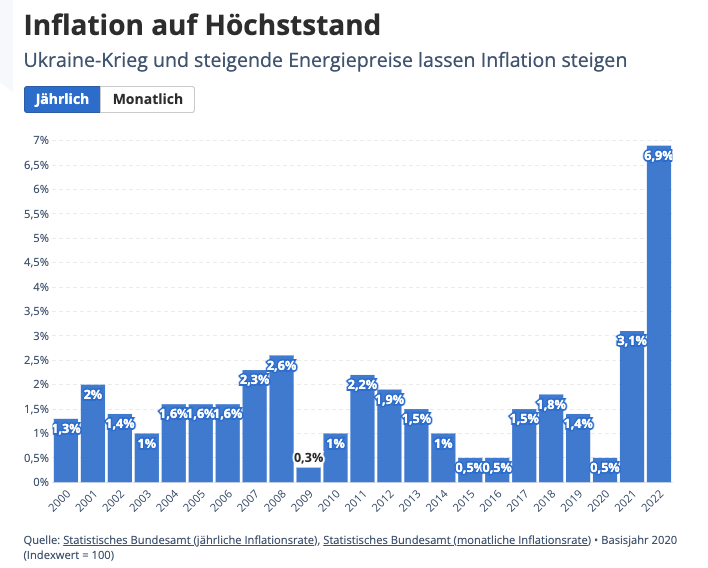For a long time, little attention was paid to procurement processes because they were more or less incidental, but in the recent past they have increasingly come into focus. This is because many companies had to deal with procurement crises: certain materials were - and still are - difficult to procure. In addition, expectations in the area of Sustainability and quality are increasing. Now is the right time to optimize procurement processes.
Procurement management as part of the corporate strategy
Procurement is whenever a company purchases goods or services from third parties, from other companies, service providers or suppliers, in order to be able to launch its own products and services. In the context of procurement, care must be taken to ensure that the goods and resources purchased are of high quality and at the same time do not break the budget - especially in times of high inflation.

In times of rapidly rising prices, companies must be particularly vigilant in seeking opportunities for savings at all levels. This applies particularly to procurement and procurement management – a major challenge when supply bottlenecks are also commonplace.
Furthermore, it is important that procurement managers select providers and suppliers that best fit the company, its special requirements, values, and standards. Consequently, those responsible must make agreements with the right suppliers at the best prices in order to increase the company's profitability.
Thus, procurement management is an important factor in corporate strategy. It is of central importance for the functioning and growth of a company and is vital for many companies and industries.
Therefore, it is always worthwhile to look at ways to optimize procurement processes, especially in times of crisis. Many companies already have tools and applications for a solid e-procurement system to ensure smooth operations. Whether such a system has been in use for a long time or has just been introduced: In most cases, it is worth optimizing the programs to promote the digitization and automation of procurement processes.
All steps of the procurement process should be checked for optimization opportunities. The most important steps in the procurement process include:
- Demand determination
- Inventory control
- Budget release
- Selection of suppliers
- Ordering
- Monitoring of the order
- Receipt of goods
- Payment processing
Procurement management and accounting
Closely related to this - especially regarding the last step - is the digitization of accounting through appropriate tools. Because procurement and accounting are intertwined. As soon as an invoice is received from the supplier, it must be checked and recorded by the accounting department. A particular focus must be placed on ensuring that the order, delivery note, and invoice are in line with the listed deliveries and prices. If there are no discrepancies, the invoice can be booked. The amount to be paid can then be paid independently by procurement through payment authorization.
Market research is essential
Whether with digital support or not: A thorough examination of the market situation is an essential part of optimized procurement management. Procurement managers must conduct market research to assess and understand delivery times for products, services from providers or suppliers, bottlenecks in the supply chain, and similar factors.
Thorough market research also provides the type of information that can be used to improve the procurement process. In this sense, it is important to get a comprehensive understanding at the outset of what individual suppliers do in detail, how exactly orders are executed, and how reliable the different channels are. In this context, strategies for risk assessment can then be developed so that potential challenges or obstacles are already to the success of a company.
Ideas for optimizing procurement
Long distances and waiting times are the most common obstacles for procurement teams in optimization processes. Delays cost a company's productivity. Therefore, an important part of optimizing procurement processes is to ensure that things move faster.
Empowering employees
The more bureaucracy there is in a workplace, the less flexible and agile work can be, and the more cumbersome it is to do even the simplest things. In this sense, it should be considered that it is not sensible for all purchases to require approval from the finance department. This is important for expensive purchases such as new equipment and machines, but for example, office supplies could be purchased by employees within a certain budget on their own initiative.
Formalizing processes
It is an obvious point, but in fact, companies often do not have a formal procurement process. This can lead to confusion about who is responsible for what when a need arises. Formalized processes facilitate problem reporting and inquiries.
Using technologies
One of the best ways to formalize, simplify, and accelerate procurement processes is to digitize the entire process. Every process that can be handled online simplifies the process of submitting information and approvals and serves to centralize procurement management, including procurement and comparison of deliveries. The use of tools specializing in e-sourcing, e-procurement, and e-informing procedures brings numerous advantages to private companies, even though these are often associated with procurement processes of public contractors.



